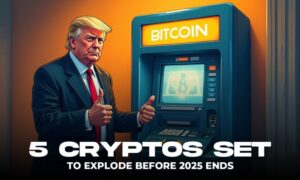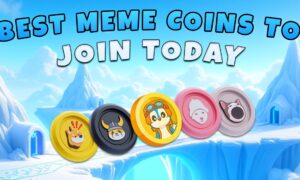Technology has become a staple in the classroom, especially since the beginning of the COVID-19 pandemic. But even with the help of videoconferencing tools, engaging students is an age-old challenge that all educators struggle with sometimes. This is especially true for remote learning, with students physically disconnected and surrounded by distractions at home.
With that in mind, innovative methods are needed to boost student engagement. With all the recent buzz about NFTs, why not consider using them to make lessons more interesting and memorable for students? Here’s what that could look like.
What Is an NFT?
NFT stands for Non-Fungible Token. Essentially, it is a unique piece of data that is stored on the blockchain, much like the world’s most popular cryptocurrency, bitcoin. Unlike bitcoin, however, NFTs represent something unique: often some kind of digital art.
If you’ve ever seen a popular meme, such as “Nyan cat” then you’ve seen something that could be turned into an NFT and sold. NFTs are now being sold by established auction houses like Christie’s, some for millions of dollars.
They are so valuable because they are truly unique—much like the original of a famous painting, NFTs are considered the only unique version of a digital medium. This can be verified thanks to the way blockchain technology works—you can see the history of an NFT. This is putting the power of pricing and art ownership in the hands of the general public, in the case of many NFTs.
NFTs in Art, Marketing, and Media Education
Physical art is still a big business, but the world of digital art has been growing steadily over the last few decades. Until the advent of NFTs, these creators had few ways to make money off an original piece. They could sell prints of digital art in some mediums, but videos and unconventional works would usually make money through indirect means, like advertising.
NFTs have turned the business on its head, changing the way we look at art, marketing, and media as a whole. This has huge implications for not only the art and media industries, but for education as well. Educators who wish to teach their students about media have to understand that they are teaching a digital generation that will have an interest in these new mediums and techniques.
Tech & Shifting Education Techniques
Digital learning is becoming the main method for educating students over time. Technology is becoming integrated into the classroom and most students are on board—they have been using these kinds of devices nearly since birth. In many ways, it is easier for them to learn through digital mediums.
If educators want to engage students, they need to leverage that interest. But it’s not just about engagement, either. It’s about preparing students for the next phase of their lives. We live in a world that is merging the digital and physical. Without incorporating tech and shifting educational methods, students won’t be prepared for our current reality and job market.
The Early Stages: How NFTs Could Boost Student Engagement
There are so many ways for educators to boost student engagement. But one of the best ways is by meeting them where they are—and that’s digital. Talking about topical trends that students are already discussing is a great way to bring lessons to life, regardless of student age.
NFTs produce so many jumping-off points for discussions about culture, social change, intellectual property, media, and even ethics. In an educational setting, there are opportunities for shaping discussions around these topics through NFTs, raising money as a class, and much more.
There have even been discussions and experiments of using NFTs to replace diplomas and resumes in the future, which could help track what students have earned throughout their school careers. This would allow students to feel more invested in their education and provide more value when applying to college and future employment. It would also ensure that there is a permanent “transcript” that is unique.
In education, getting students interested in learning is often the greatest challenge. By bringing in topics like NFTs, teachers can help students think critically and retain information that could help them succeed as they move through school—and life.



































